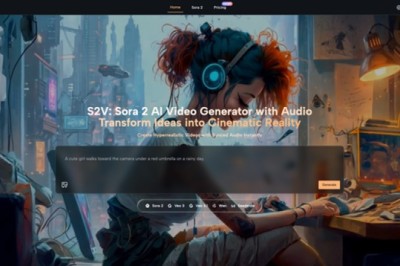views

Photo by Marvin Meyer on Unsplash
You might think that the main focus of an e-commerce website is simply selling products, but in the digital jungle of the internet, visibility is king. After all, how could you expect customers to buy if they don’t even find your store in the first place? This is where e-commerce SEO comes in.
Strategic optimization practices act as the compass guiding customers straight to your virtual storefront. With each strategic optimization, you're nurturing your website's presence, cultivating its authority, and ultimately reaping the bountiful harvest of increased traffic and conversions.
The thing is, e-commerce website optimization isn't just about boosting your rankings on search engine results pages. It’s about crafting an immersive and seamless online experience that captivates visitors from their first click to their final purchase. Let’s dive into how you can do it.
Image Optimization
A great e-commerce website has high-quality product photos to help customers understand the product even better. Optimizing images for size and format can drastically improve page load times– which later leads to better user experience and higher conversion rates.
One of the primary methods of image optimization is compression. It reduces the file size of an image by removing unnecessary data. There are two types of compression: lossy and lossless. Lossy compression reduces file size by permanently removing some image data, while lossless compression reduces file size without sacrificing image quality.
You also should consider using different image formats. Different image file formats have different compression algorithms and are suitable for different types of images.
For photographs and images with many colors, JPEG is typically the best choice due to its ability to produce small file sizes with minimal loss of quality. For images with flat colors and transparency, such as logos and icons, PNG or GIF (motion graphics) may be more appropriate.
Advanced Search Functionality
Implementing advanced search features like autocomplete, spell check, and synonym recognition can greatly boost the usability of your site and help users find products more easily.
First, incorporate the autocomplete feature. Autocomplete suggests search queries to users as they type based on popular or relevant keywords. It helps users find what they're looking for faster by reducing the amount of typing required and offering suggestions that match their intent. It can also correct spelling errors and provide alternative search terms, improving the accuracy of search results.
Other than that, spell-check functionality can come in handy too. It automatically corrects misspelled search queries or suggests alternative spellings. This prevents users from encountering "no results found" pages due to minor typos and ensures that they can find products even if they don't know the exact spelling.
Last is synonym recognition. You can expand search results to include related terms or synonyms for the user's query. For example, if a user searches for "sneakers," the search engine may also return results for "running shoes" or "athletic footwear." This feature makes sure that users find relevant products even if they use different keywords.
Streamlined Checkout Process
A complex checkout process is one of those few reasons why potential customers abandon their carts before completing a purchase. Think about it: after a customer has spent time browsing your products, adding items to their cart, and finally deciding to make a purchase, encountering a lengthy or confusing checkout process can be incredibly frustrating.
Consider implementing a single-page checkout process where all necessary fields and steps are condensed onto one page. This reduces the number of clicks required to complete a purchase, making the process feel more seamless and efficient for customers.
Thus, while account creation can be valuable for capturing customer information and encouraging repeat purchases, forcing users to create an account before checkout can be a barrier to conversion. So, provide an option for customers to checkout as guests without requiring them to create an account.
Streamline the checkout form by only asking for essential information needed to process the order, such as shipping address, payment information, and contact details.
Social Proof Integration
Don't forget to incorporate social proof elements such as customer reviews, ratings, and testimonials throughout your e-commerce site to build trust and credibility with potential customers. This way, you can alleviate concerns and encourage new users to make a purchase.
Whether it’s from your social media or other marketing channels, positive reviews and high ratings reassure potential customers about the quality and satisfaction level of the product. When you include those testimonials on your e-commerce website, new users who haven't made any purchases can finally trust your store and make informed purchase decisions,
If you use influencer marketing, you can also use the endorsement as social proof as it carries weight and credibility with their followers. You can increase brand awareness, engagement, and conversions with them. Remember that authenticity and alignment with your brand values are crucial when selecting influencers for partnerships.
Retargeting and Abandoned Cart Emails
Implement retargeting campaigns and abandoned cart email sequences to re-engage users who have shown interest in your products but haven't completed a purchase. This is how you can recover those lost sales and increase conversion rates.
Place a retargeting pixel (a snippet of code) on your website to track user's browsing behavior, such as the products they viewed or added to their cart. Then, segment your audience based on their behavior and interests. For example, you can create separate retargeting campaigns for users who viewed a specific product category or added items to their cart but didn't complete the purchase.
Send abandoned cart emails shortly after the user leaves your website to remind them about the items they left behind. Timing is crucial here, and sending the email within an hour or two of abandonment tends to yield the best results.
Use a clear and prominent CTA in your abandoned cart emails that direct users back to their cart to complete the purchase. Make it as easy as possible for users to pick up where they left off.
Wrapping Up
E-commerce SEO isn’t all about keyword research. There are tons of elements you can perfect to enhance your online store’s visibility, usability, and, ultimately, profitability. By focusing on a holistic approach to optimization, you can create a website that not only ranks well in search engine results but also delivers a seamless and satisfying experience for your customers.
One thing to bear in mind here is that e-commerce SEO isn’t a one-time effort. You need to continuously monitor and adapt your SEO strategy to keep up with ever-evolving search engine algorithms and user behaviors. Regularly audit your site for technical issues, optimize your content for relevancy and user intent, and prioritize user experience across all touchpoints.
Author Bio
Andre Oentoro is the founder of Breadnbeyond, an award-winning explainer video company. He helps businesses increase conversion rates, close more sales, and get positive ROI from explainer videos (in that order).

























Comments
0 comment